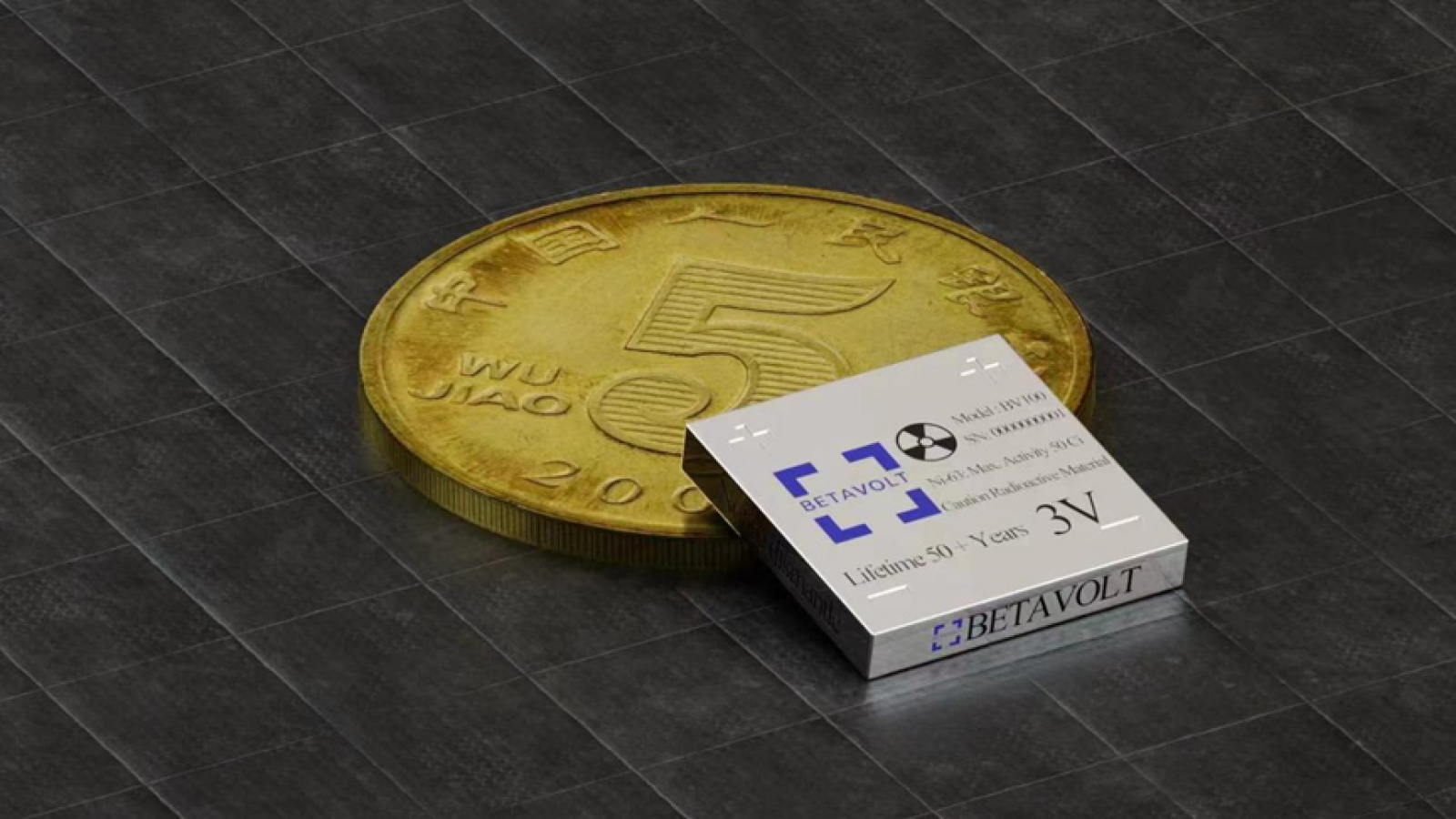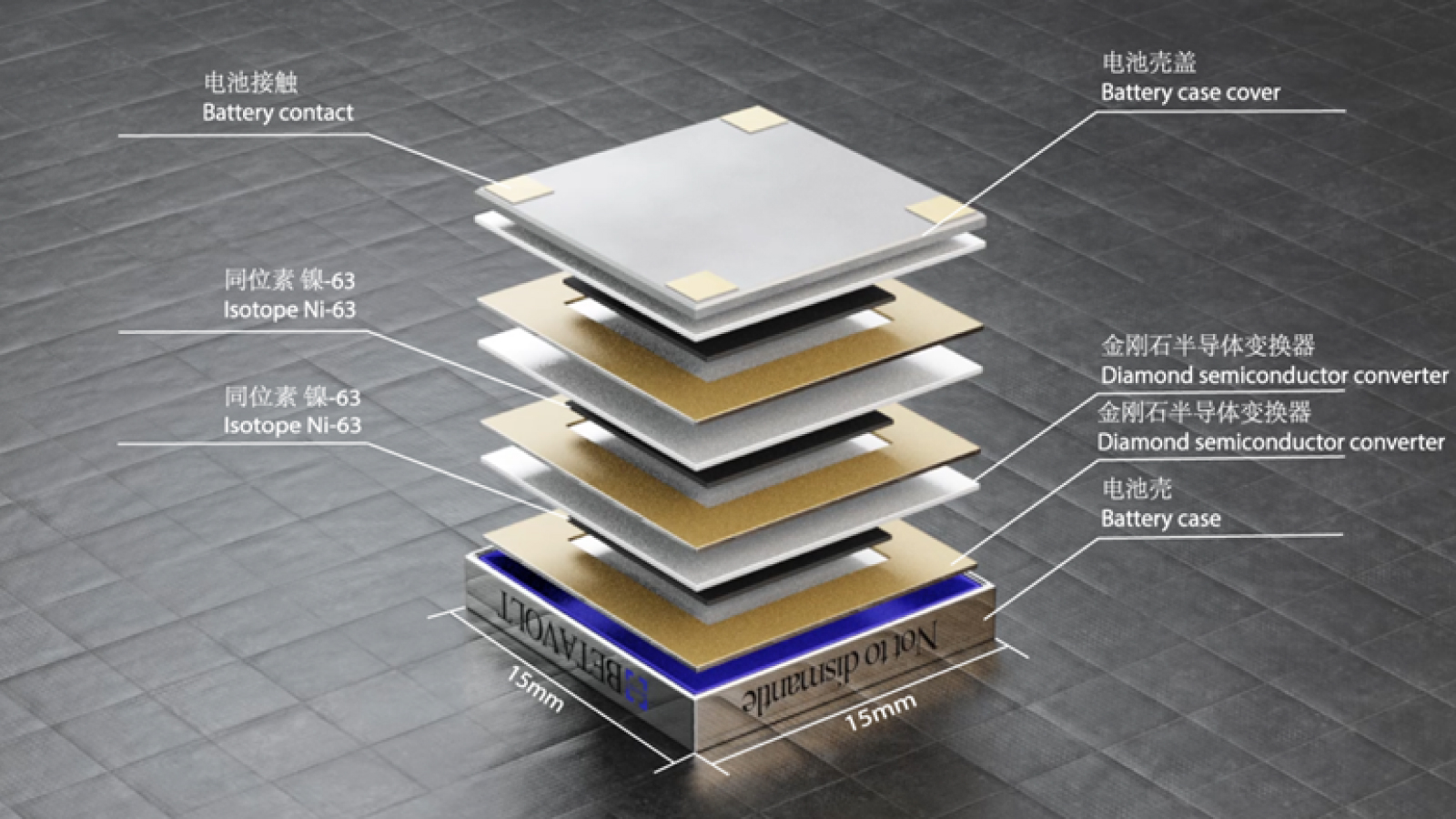
Chinese scientists have built a nuclear battery that can produce power for up to 50 years without being recharged. The technology, which contains a radioactive isotope, or version of nickel, as its power source, will be the first of its kind available for general purchase, Betavolt representatives said on Jan. 8 in a translated statement.
The new battery, dubbed "BV100", is smaller than a coin, measuring 0.6 x 0.6 x 0.2 inches (15 x 15 x 5 millimeters), and generates 100 microwatts of power. If approved for use in devices like smartphones, future generations of the battery would ultimately remove the need to ever charge them, company representatives said.
But Juan Claudio Nino, a materials scientist at the University of Florida, is skeptical. Its size means it contains relatively little radioisotope and it produces just 0.01% of the electricity required. "Certainly it's within the range for a pacemaker or perhaps a passive wireless sensor. But in its current form, it just doesn't have enough power to run a cell phone," he said.
Nuclear batteries are a well-established technology, Nino told Live Science. First developed in the early 1950s, these devices harness the energy released when radioactive isotopes decay into other elements. As long as the radioactive element is decaying, the battery will continue generating power. It means nuclear batteries typically have decades-long lifespans and are commonly used to power spacecraft or automated scientific stations — where equipment can be left unattended for years at a time. They're also used in pacemakers.
Related: New battery tech will slash charging times and boost EV range before the decade is out
Betavolt’s battery uses nickel-63 as the radioactive source, which Nino explained decays into copper through a beta pathway. "In simple terms, you have a neutron (a neutral subatomic particle) that transforms into a proton (a positive subatomic particle) by emitting an electron. If you can do something with that electron, it's a source of electricity," he said.
The BV100 uses a semiconductor layer to capture these electrons and conduct them through the battery in an organized fashion. "A semiconductor is in-between a conductor like a metal and an insulator like rubber. The electrons can only move if they have enough energy so we can control them as they are moved," Nino said.

Betavolt's battery sandwiches the radioactive nickel between two ultrathin plates of diamond, a particularly efficient semiconducting material, converting the electrons released by radioactive decay into a usable electric current.
These radioisotopes pose little danger if they're used in space, for example, but need shielding with materials that can absorb harmful radiation if used in devices like pacemakers or in future smartphones to be considered safe.
"The shielding here is critical because you don't want something radioactive damaging the body," Nino said. Radiation protection, often made of materials such as lead or tungsten, is usually integrated into the battery design, but Nino cautioned it's important to match the type and amount of shielding with the radioactive element used. If you need more power, meanwhile, you simply add a higher concentration of the radioactive source, but then you need additional protection. That can become impractical, said Nino, if more and more of the device is occupied by shielding.
However, despite the need for weighty shielding, nuclear batteries do boast a much higher energy density than conventional lithium-ion batteries — ten times as much according to Betavolt.
The challenge of how to access the maximum power from a single battery is still an area of research and Betavolt plans to launch a 1 watt battery in 2025 which is much closer to the 2 – 6 W required by a standard cell phone. In the meantime, the company suggested combining its batteries in parallel to increase the power directed to a device.
The company also plans to research the use of different nuclear isotopes in future versions of its nuclear battery, including strontium-90, promethium-147 and deuterium, which can last between two and 30 years in a device.







